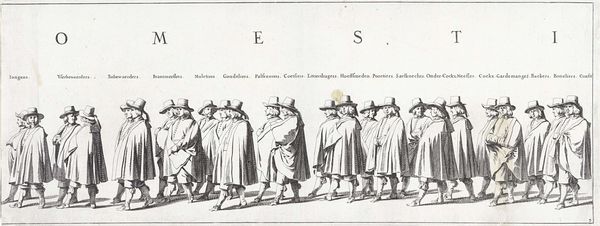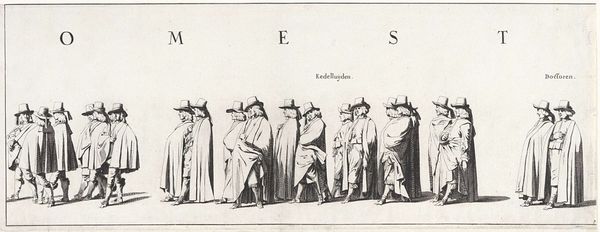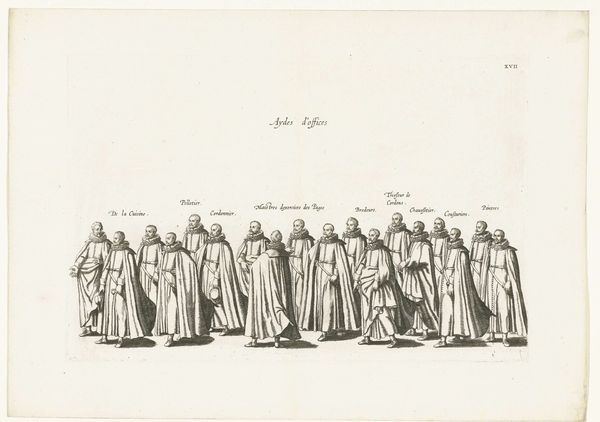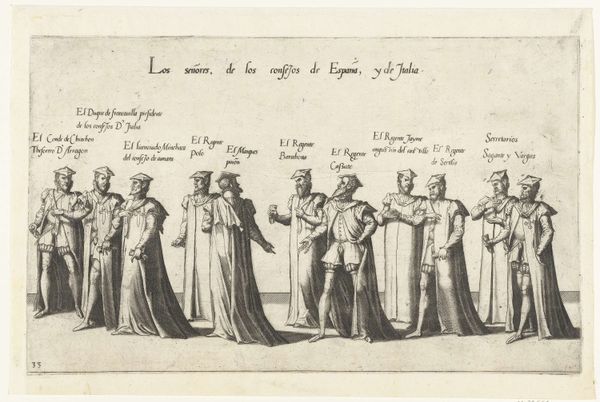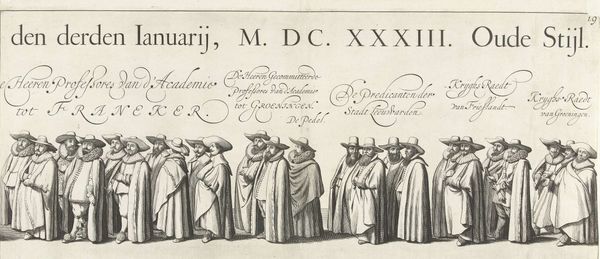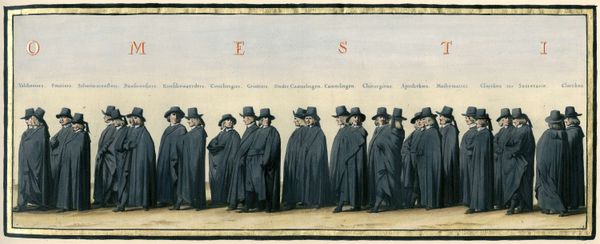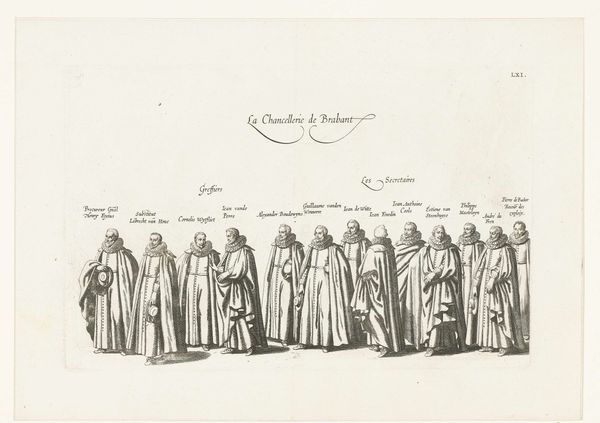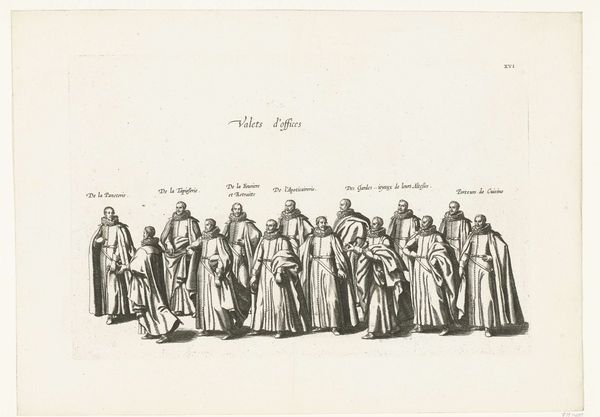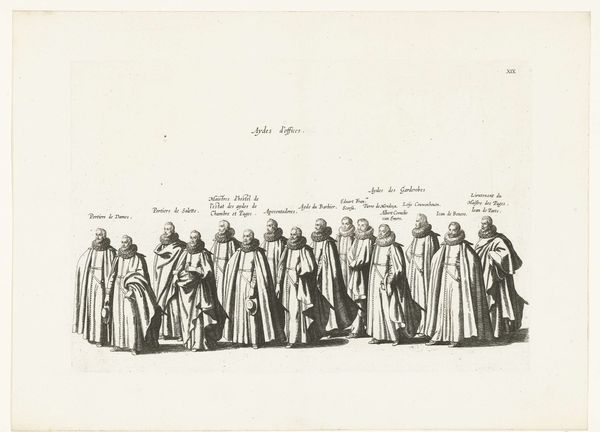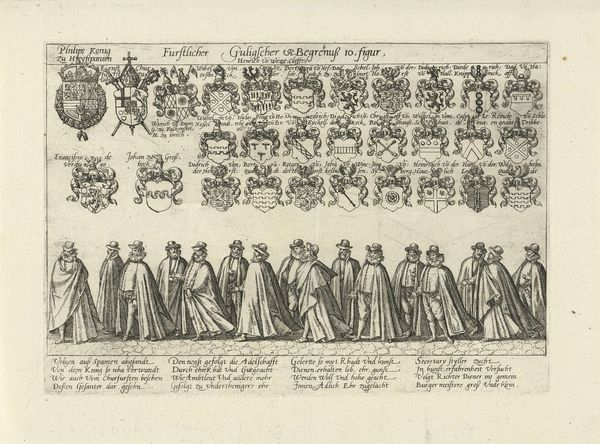
De begrafenisstoet van Frederik Hendrik (plaat nr. 5), 1647 1647 - 1651
0:00
0:00
pieternolpe
Rijksmuseum
print, engraving
#
dutch-golden-age
# print
#
old engraving style
#
landscape
#
figuration
#
line
#
history-painting
#
engraving
Dimensions: height 214 mm, width 547 mm
Copyright: Rijks Museum: Open Domain
Curator: Pieter Nolpe’s engraving, “De begrafenisstoet van Frederik Hendrik (plaat nr. 5),” created between 1647 and 1651, captures a moment in Dutch history with meticulous detail. What's your initial response to it? Editor: Bleak uniformity. Rows upon rows of what look like slightly judgmental beige ghosts. A very orderly march towards oblivion, perhaps? Curator: Indeed. Note the linearity, the repetition of figures. The composition invites analysis through structuralist lenses—the parade of figures categorized and labelled in strict order as Waldmeisters, Fiscals, and so forth above each discrete cluster of figures. There is an unmistakable focus on social hierarchy, codified through visual representation. Editor: They're like paper dolls in a morbid play. I see what you mean with social hierarchy. All of them dressed in a uniform cloak but distinguished by social class… Gives you a chilly sense of how cemented people’s fates were. A funeral cortege. Talk about performance of power and all the players on the stage. What’s the emotional note the artist tries to strike here? Curator: I believe Nolpe aimed to create an ordered, commemorative document rather than to elicit a strong emotional response. The formal approach is a hallmark of the era's artistic inclination, emphasizing precision over expressiveness. But the emotional effect is, like many things, contextualized through each spectator. The line work, whilst precise, also hints at an ethereal distance, which has been said to represent mourning through restraint. Editor: Ethereal…I like that, an interesting dance between cold calculation and fleeting existence! For me it conjures a feeling that it represents more than a single man's death. Almost like the death of a generation, the withering of order, if that makes any sense… Maybe because it resembles more an organizational chart than a proper parade? Curator: A compelling consideration. These funerals certainly marked a point, with political repercussions, too, one could argue. Now that we discussed semiotic order, historical document, potential hidden sentiments... any final note from your artist’s heart? Editor: It strikes me as an attempt to freeze a fleeting moment. To etch memory into something rigid, while all along time keeps moving, distorting even the sharpest lines, leaving only our interpretations. A frozen moment with very cold aesthetics, one must admit. Curator: Beautifully put. An evocative ending to our considerations.
Comments
No comments
Be the first to comment and join the conversation on the ultimate creative platform.
